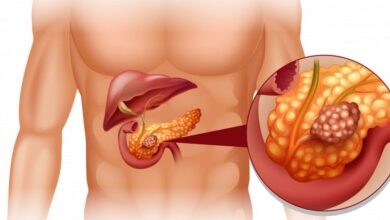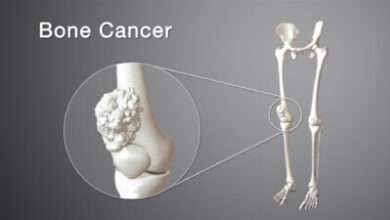Understanding Breast Cancer: A Comprehensive Guide

Introduction to Breast Cancer
Breast cancer is one of the most common types of cancer affecting women worldwide, although men can also be diagnosed with it. It occurs when cells in the breast grow abnormally and uncontrollably, forming a lump or mass. Early detection and treatment are crucial for improving outcomes and survival rates.
Breast cancer awareness campaigns have significantly increased knowledge about the disease, but many misconceptions and questions remain. This article aims to provide a detailed, expert-level understanding of breast cancer in a casual and approachable tone. Whether you’re seeking information for yourself or supporting someone else, knowledge is power in the fight against this disease.
The Basics of Breast Cancer
Breast cancer originates in the breast tissue, often in the ducts or lobules. It can spread to nearby lymph nodes and other parts of the body if not detected early. The exact cause is often unknown, but genetic mutations, lifestyle choices, and hormonal factors are common contributors.
The good news? Advances in medicine and technology have made breast cancer more treatable than ever. Early-stage breast cancer has a high survival rate, and ongoing research continues to improve options for patients at all stages.
Types of Breast Cancer

Understanding the type of breast cancer is essential for determining the best treatment. Breast cancer is not a one-size-fits-all diagnosis; there are several distinct types.
1. Ductal Carcinoma In Situ (DCIS)
DCIS is a non-invasive form of breast cancer that starts in the milk ducts. It’s often detected during mammograms and has an excellent prognosis when treated early. Although it hasn’t spread beyond the ducts, leaving it untreated could lead to invasive cancer.
2. Invasive Ductal Carcinoma (IDC)
IDC is the most common type of breast cancer, accounting for about 80% of diagnoses. This invasive form begins in the ducts but can spread to surrounding breast tissue and beyond. Early intervention is crucial to prevent metastasis.
3. Triple-Negative Breast Cancer (TNBC)
TNBC lacks estrogen, progesterone, and HER2 receptors, making it more challenging to treat. It’s aggressive and often affects younger women. Treatment usually involves chemotherapy, as hormonal therapies are ineffective.
4. HER2-Positive Breast Cancer
This type is characterized by an overexpression of the HER2 protein, which promotes cancer growth. HER2-positive breast cancer tends to grow faster but responds well to targeted therapies.
5. Inflammatory Breast Cancer (IBC)
IBC is a rare and aggressive form that causes redness, swelling, and warmth in the breast. It often doesn’t present as a lump, making it harder to detect in early stages. Immediate medical attention is critical.
Symptoms to Watch For
Breast cancer symptoms vary widely from person to person. Some individuals may notice changes in their breasts, while others may not experience any symptoms at all.
1. Physical Changes
- A new lump or thickening in the breast or underarm.
- Changes in breast size or shape.
- Dimpling or puckering of the skin, resembling an orange peel.
2. Skin and Nipple Changes
- Redness, scaling, or flaking of the nipple or breast skin.
- Nipple discharge, especially if it’s bloody.
- Inverted or retracted nipples, particularly if they were previously outward-facing.
3. Pain and Swelling
- Persistent pain in any part of the breast or armpit.
- Swelling in the breast, even if no lump is present.
Early detection through self-exams and routine mammograms is the best defense. If you notice any unusual changes, consult a healthcare provider immediately.
Causes and Risk Factors
Breast cancer doesn’t have a single identifiable cause, but researchers have identified several risk factors. These include genetic, environmental, and lifestyle elements.
1. Genetic Predisposition
Inherited mutations in the BRCA1 and BRCA2 genes significantly increase the risk of breast and ovarian cancers. Genetic testing can identify these mutations, allowing individuals to take preventive measures.
2. Hormonal Factors
Hormones play a critical role in breast cancer development. Extended exposure to estrogen, such as starting menstruation early or entering menopause late, may increase risk. Hormone replacement therapy (HRT) has also been linked to a higher likelihood of developing breast cancer.
3. Lifestyle Choices
- Smoking and excessive alcohol consumption.
- Obesity, particularly after menopause.
- Lack of physical activity.
While some risk factors are beyond control, adopting a healthy lifestyle can lower the risk and improve overall well-being.
Diagnosis and Screening
Early diagnosis of breast cancer significantly improves treatment outcomes. Regular screening and prompt medical evaluation of symptoms are vital.
1. Mammograms
Mammograms are the most common screening tool for breast cancer. They can detect abnormalities that aren’t yet palpable, making them invaluable for early detection. Women over 40 are generally advised to have annual or biennial mammograms.
2. Ultrasound and MRI
For women with dense breast tissue or a high risk of breast cancer, ultrasound and MRI are often used in conjunction with mammograms to provide a clearer picture.
3. Biopsies
If imaging detects an abnormality, a biopsy is performed to determine whether the cells are cancerous. This involves extracting a small sample of tissue for laboratory analysis.
Treatment Options
Treatment for breast cancer depends on the type, stage, and overall health of the patient. Advances in medicine have made personalized treatment plans more effective than ever.
1. Surgery
- Lumpectomy: Removes only the tumor and a small margin of surrounding tissue.
- Mastectomy: Removes the entire breast.
Surgery is often combined with other treatments to reduce the risk of recurrence.
2. Radiation Therapy
Radiation therapy uses high-energy rays to target and kill cancer cells. It’s often used after surgery to destroy remaining cancer cells in the breast or chest wall.
3. Chemotherapy
Chemotherapy involves using drugs to kill or slow the growth of cancer cells. It can be administered before surgery (neoadjuvant therapy) to shrink tumors or after surgery (adjuvant therapy) to prevent recurrence.
4. Hormone Therapy
For hormone receptor-positive cancers, medications like tamoxifen or aromatase inhibitors block or lower hormone levels, slowing cancer growth.
5. Targeted Therapy
Targeted therapies focus on specific proteins or genes involved in cancer growth, such as HER2. These therapies are less toxic than traditional chemotherapy.
Prevention and Risk Reduction
While breast cancer cannot always be prevented, there are steps to reduce risk.
1. Healthy Lifestyle Choices
- Maintain a balanced diet rich in fruits, vegetables, and whole grains.
- Engage in regular physical activity.
- Limit alcohol intake and avoid smoking.
2. Genetic Testing and Counseling
For those with a family history of breast cancer, genetic counseling and testing can provide valuable insights. Preventive measures, such as prophylactic mastectomy, may be considered in high-risk cases.
3. Regular Screenings
Adhering to recommended screening schedules can help catch breast cancer early, when it’s most treatable.
Emotional and Psychological Impact
A breast cancer diagnosis is life-changing, not just physically but emotionally. Patients often face anxiety, depression, and fear of the unknown.
1. Coping Mechanisms
Support groups, therapy, and open communication with loved ones can make a significant difference. Professional counseling may also help patients navigate the emotional challenges of treatment.
2. Support Systems
Friends, family, and healthcare teams play an essential role in a patient’s journey. Offering emotional and practical support can alleviate some of the burdens.
3. Survivorship and Hope
Many individuals go on to lead fulfilling lives after breast cancer treatment. Advances in research continue to provide hope, and survivorship programs help patients transition back to everyday life.
Conclusion
Breast cancer is a complex disease, but early detection, informed decision-making, and advances in medical treatments have significantly improved outcomes. By understanding the risks, symptoms, and treatment options, individuals can take proactive steps toward prevention and recovery.
Knowledge is a powerful ally in the fight against breast cancer. Whether you’re a patient, survivor, or supporter, staying informed is key to navigating this challenging journey.



